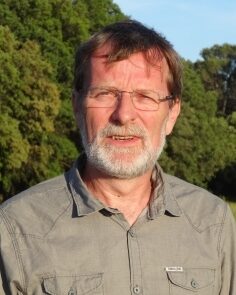INRAE
French National Research Institute for Agriculture, Food and Environment
A French public research institution that undertakes research for high-quality and healthy food produced by a sustainable agriculture. INRA is Europe’s top agricultural research institute and the world’s number two centre for the agricultural sciences. Two INRAE divisions are involved in this project: Environment and Agronomy (EA), through the LEPSE and Applied Mathematics and Informatics (MIA) through the MISTEA Joint Research Unit.
The LEPSE has internationally recognised experience in genetic analysis and modelling of development, growth and transpiration of plants in response to environmental conditions. It has been one of the first groups to develop phenotyping platforms, from 2000 onwards, and the conceptual framework to use them in combination with modelling and genetic analyses.
MISTEA focuses on modelling, integrated data management, knowledge representation and reasoning and data analysis of biological, agronomical or environmental systems. Both INRA units are involved in the development of a Phenomic information system, able to organize datasets in a FAIR way, at French and European levels (coordination of the H2020 I3 project EPPN2020 and WP leaders participation in the future infrastructure EMPHASIS).
INRAE will be responsible for coordination of WP1 and will actively participate in WP2, 3 and 4by providing state-of-the-art methods and access to high-level infrastructure for plant phenomics enabling the scientific capacity building at CBQF, as well as to the Partners of the STARGATE consortium, through training workshops, training schools for early-stage researchers and short-term scientific training periods.
Researchers
His research focuses on the adaptation of genotypes to drought scenarios, including those in 2050, via a combination of phenomics, modelling and genomic prediction. He coordinates the French Phenomic infrastructure (Phenome-Emphasis) and a European project on phenomics (EPPN2020). He is invited professor in Nanjing Agricultural University. He got awards by the French Academy, by the “laurier d’Excellence INRA” and by the Soil Science Society of America.
He obtained a PhD in 2010 in Plant Ecophysiology from the University of Barcelona and CIMMYT (Mexico). Since September 2013 he is the coordinator of the PhenoArch high-throughput plant phenotyping platform where he focuses his research in developing intelligent information systems to organise phenomics data, in combining tools and methods to characterize the environmental conditions as sensed by individual plants and to estimate plant growth, architecture and transpiration, with the final aim to extract valuable traits that can be used in crop modelling and genetics. He is also the technical coordinator across the French Plant Phenotyping Network (https://www.phenome-fppn.fr/) and he is an active member of the European and International Plant Phenotyping Networks (EPPN and IPPN).
Director of the MISTEA Joint Research Unit at INRAE since 2009 and is the Leader of the CODEX Centre. His work is focused on the development of data integration and computer science methods devoted to analysis and decision support for Agronomy and Environment, with particular emphasis on modelling, dynamical systems and complex systems. He is leader of the PHENOME MCP2 collaborative Project -Consistent distributed information system, and JRA3 leader in EPPN2020 project.
An author of more than 50 peer-reviewed research publications. Christian has worked for over 20 years in plant modelling, in particular in plant architecture – environment interactions (Functional Structural Plant Modelling). He develops several interoperable ecophysiological and epidemiological models on the OpenAlea platform, and 3D model-assisted image analysis pipelines operating on high throughput phenotyping platforms. Christian is member of CEI, an evaluation committee of INRAE.
Dr Claude Welcker is a plant breeder and geneticist working on the genetic variability of plant adaptation to drought and heat stress and its impact on performance in drought-prone environments and implication in breeding. He is deputy director of Montpellier plant phenotyping platform (M3P) and coordinates projects in academic/private large consortia.
Since 2008 he is working on high-throughput plant phenotyping infrastructure. He has got a strong experience in managing large amounts of data. He is involved in the design and the deployment of e-infrastructure dedicated the plant phenotyping community.










